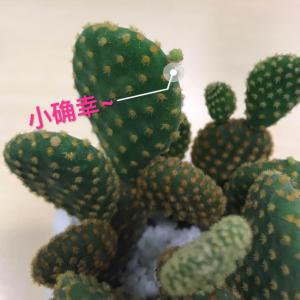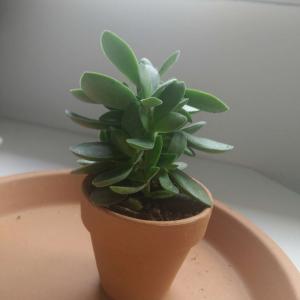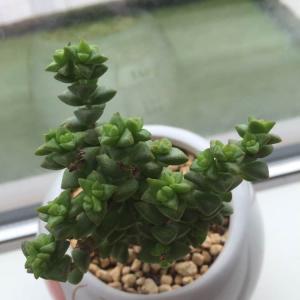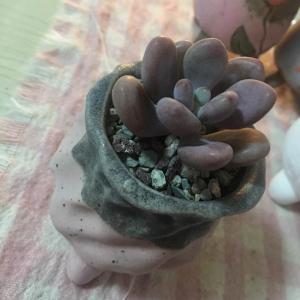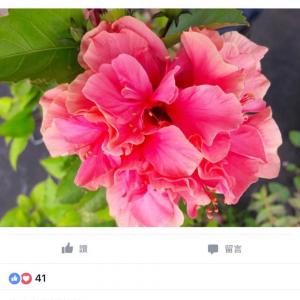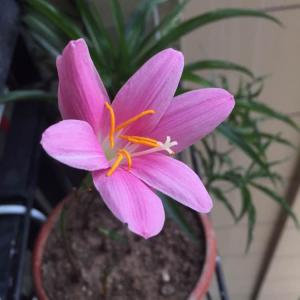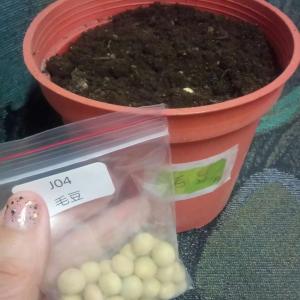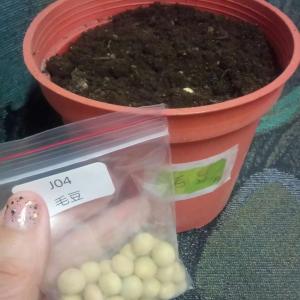文章
Miss Chen
2017年08月14日

Dwarf snapdragon cultivars (Antirrhinum majus) grow 8 to 12 inches tall, significantly shorter than standard snapdragons, which grow 1 1/2 to 3 1/2 feet tall. With full sun and well-draining soil, these little perennials brighten up the landscape with colorful white, yellow, peach, pink, purple, red and bi-colored flowers. Through dwarf snapdragons are technically perennials in U.S. Department of Agriculture plant hardiness zones 7 through 10, you can also treat them as annuals in USDA zones 7 and lower.

Continuous-Release Fertilizer
Fertilize dwarf snapdragons once in spring, right after planting, in USDA zones 2 through 7. In USDA zones 8 through 10, fertilize in fall after planting to provide nutrients for the winter growing season. Use a continuous-release fertilizer, such as a 12-4-8 product, to provide sustained nutrients. Use 4 tablespoons per 4 square feet or bed around the dwarf snapdragons. Scatter the dry fertilizer evenly over the soil, then water the area until the soil is damp 6 inches deep.
Water Regularly
Water dwarf snapdragons when the top 1/2 to 1 inch of the soil starts to feel dry, giving the bed enough water to dampen the soil 6 inches deep. Caring for dwarf snapdragons successfully requires a delicate balance of regular water, without watering too much. Constantly wet, muddy soil can cause them to grow poorly.
Removing the Flowers
As dwarf snapdragons bloom and go to seed, remove the dead and fading flowers. This encourages the plants to bloom more abundantly through the season. To remove the dead flowers, a process called deadheading, pinch the stalk directly below the flower using your fingernails. Wash your hands with soap and water after.

Pests and Problems
Check dwarf snapdragons for aphids through the growing season. Aphids, small, soft-bodied insects that can be green, black or pink, feed on the leaves and flowers. Also keep an eye out for spider mites, which are minuscule white pests that form a fine webbing over the leaves where they are feeding. Start by washing aphids and spider mites off with a strong stream of water, then check daily and follow up with additional water. If the pests keep coming back, mix 4 teaspoons of insecticidal soap with 1 quart of water in a clean garden sprayer or spray bottle. Use the mixture to spray the insects and affected leaves, until the area is wet. Repeat every four to seven days until the pests are eradicated.

Continuous-Release Fertilizer
Fertilize dwarf snapdragons once in spring, right after planting, in USDA zones 2 through 7. In USDA zones 8 through 10, fertilize in fall after planting to provide nutrients for the winter growing season. Use a continuous-release fertilizer, such as a 12-4-8 product, to provide sustained nutrients. Use 4 tablespoons per 4 square feet or bed around the dwarf snapdragons. Scatter the dry fertilizer evenly over the soil, then water the area until the soil is damp 6 inches deep.
Water Regularly
Water dwarf snapdragons when the top 1/2 to 1 inch of the soil starts to feel dry, giving the bed enough water to dampen the soil 6 inches deep. Caring for dwarf snapdragons successfully requires a delicate balance of regular water, without watering too much. Constantly wet, muddy soil can cause them to grow poorly.
Removing the Flowers
As dwarf snapdragons bloom and go to seed, remove the dead and fading flowers. This encourages the plants to bloom more abundantly through the season. To remove the dead flowers, a process called deadheading, pinch the stalk directly below the flower using your fingernails. Wash your hands with soap and water after.

Pests and Problems
Check dwarf snapdragons for aphids through the growing season. Aphids, small, soft-bodied insects that can be green, black or pink, feed on the leaves and flowers. Also keep an eye out for spider mites, which are minuscule white pests that form a fine webbing over the leaves where they are feeding. Start by washing aphids and spider mites off with a strong stream of water, then check daily and follow up with additional water. If the pests keep coming back, mix 4 teaspoons of insecticidal soap with 1 quart of water in a clean garden sprayer or spray bottle. Use the mixture to spray the insects and affected leaves, until the area is wet. Repeat every four to seven days until the pests are eradicated.
0
0
文章
Miss Chen
2017年08月11日

The orchid family (Orchidaceae) includes approximately 600 genera and about 30,000 natural species worldwide. Orchids thrive in U.S. Department of Agriculture plant hardiness zones 1 through 13, depending on the species, but most houseplants are tropical orchids. These exotic-looking plants have earned a reputation as being difficult to grow, but many are surprisingly easy to care for. Lighting and watering needs vary, but most orchids require fertilizer high in both potassium and calcium. Making your own orchid fertilizer from common household items is quick and easy.

Eggshells and Chicken Bones
In two vital ways, chickens provide orchids with the nutrients they need to grow. Both eggshells and chicken bones contain high amounts of the calcium and potassium that orchids crave. Wash and dry eggshells and crush them with a mortar and pestle to create fertilizer for orchids. Dried chicken bones require the same technique, but are a little more difficult to process. Once you've created the crushed mixture, sprinkle it over the orchid's bark mixture.
Don’t Throw Out Cooking Water
The cooking water from both potatoes and rice provides valuable nutrients to orchids. While rice water provides a good source of vitamin B, potato water contains calcium and potassium. Save the water from cooking potatoes and rice and store it in the fridge. Apply the water to orchids every two weeks.
Milk, Molasses and Epsom Salt
Ordinary cow's milk provides a good source of protein for your orchids, but dilute it first -- 1 part milk to 4 parts water -- or get into the habit of rinsing out your milk carton with water and using it to water your orchids every two weeks. Molasses gives your orchids a boost of potassium. Mix a teaspoon of molasses to a quart or two of water and use it when you water your orchids. Mixing a teaspoon of Epsom salt in two quarts of water gives your orchids a boost of magnesium – but use caution not to use scented Epsom salt sold as foot wash. Look for Epsom salt in the gardening section of your home improvement center.
Oak Leaves and Teabags
Oak leaves and teabags, which are high in nitrogen can be used as natural fertilizer to boost orchid growth. Oak leaves need to be brewed -- 1 part water to 2 parts leaves -- for about two weeks in the sun to create liquid fertilizer. Water your orchids with the brewed oak-leaf tea once a month. Open teabags and sprinkle the contents on the soil of your orchid plants once a month during the growing season.
Easy Does It
Orchids are light feeders and do not require frequent fertilizer. While homemade orchid fertilizers provide them with the nutrients they need to thrive, heavy applications may harm your orchids. Try one or two remedies at a time and use the health of your orchids as your guide to fertilizer application. Signs of over-fertilization include a white crust on top of the bark, leaf tips dying and roots that turn black. Always flush your pot monthly with water to remove the build up of salt from fertilizers. Homemade fertilizers may not give your orchid all the NPK nutrients it requires for proper health. If signs of poor health occur that are not from over-fertilizing, supplement with a water-soluble 20-20-20 blend, mixed at one teaspoon per gallon of water and apply monthly.

Eggshells and Chicken Bones
In two vital ways, chickens provide orchids with the nutrients they need to grow. Both eggshells and chicken bones contain high amounts of the calcium and potassium that orchids crave. Wash and dry eggshells and crush them with a mortar and pestle to create fertilizer for orchids. Dried chicken bones require the same technique, but are a little more difficult to process. Once you've created the crushed mixture, sprinkle it over the orchid's bark mixture.
Don’t Throw Out Cooking Water
The cooking water from both potatoes and rice provides valuable nutrients to orchids. While rice water provides a good source of vitamin B, potato water contains calcium and potassium. Save the water from cooking potatoes and rice and store it in the fridge. Apply the water to orchids every two weeks.
Milk, Molasses and Epsom Salt
Ordinary cow's milk provides a good source of protein for your orchids, but dilute it first -- 1 part milk to 4 parts water -- or get into the habit of rinsing out your milk carton with water and using it to water your orchids every two weeks. Molasses gives your orchids a boost of potassium. Mix a teaspoon of molasses to a quart or two of water and use it when you water your orchids. Mixing a teaspoon of Epsom salt in two quarts of water gives your orchids a boost of magnesium – but use caution not to use scented Epsom salt sold as foot wash. Look for Epsom salt in the gardening section of your home improvement center.
Oak Leaves and Teabags
Oak leaves and teabags, which are high in nitrogen can be used as natural fertilizer to boost orchid growth. Oak leaves need to be brewed -- 1 part water to 2 parts leaves -- for about two weeks in the sun to create liquid fertilizer. Water your orchids with the brewed oak-leaf tea once a month. Open teabags and sprinkle the contents on the soil of your orchid plants once a month during the growing season.
Easy Does It
Orchids are light feeders and do not require frequent fertilizer. While homemade orchid fertilizers provide them with the nutrients they need to thrive, heavy applications may harm your orchids. Try one or two remedies at a time and use the health of your orchids as your guide to fertilizer application. Signs of over-fertilization include a white crust on top of the bark, leaf tips dying and roots that turn black. Always flush your pot monthly with water to remove the build up of salt from fertilizers. Homemade fertilizers may not give your orchid all the NPK nutrients it requires for proper health. If signs of poor health occur that are not from over-fertilizing, supplement with a water-soluble 20-20-20 blend, mixed at one teaspoon per gallon of water and apply monthly.
0
0
文章
Miss Chen
2017年08月11日

Native to tropical Asia, the bamboo orchid (Arundina graminifolia or Arundina barbusifolia) grows to 8 feet with reedy stems and evergreen, grass-like leaves up to 1-foot long. Its 2- to 3-inch-wide flowers appear in clusters at the stems' tips in summer and autumn, each lasting for about three days. Those fragrant blooms vary in color from white to pinkish mauve with a darker purple lip. The Missouri Botanical Garden lists the bamboo orchid as perennial only in U.S. Department of Agriculture plant hardiness zones 11 through 12, but other sources consider it hardy as far north as USDA zone 9.

Indoor Position
Due to its large size and preference for high humidity, this orchid generally performs better outdoors than indoors. If you wish to try it as a houseplant, a clump – which usually contains three to five canes – needs a pot at least 12 inches in diameter. The bamboo orchid isn't picky about its medium and can be grown in regular potting soil, sphagnum moss or a more typical orchid mix of 1 part organic potting soil, 1 part coarse orchid bark and 1 part sand.
The bamboo orchid prefers full sun or at least partial sun, so position it on or near a south-facing windowsill where it receives temperatures between 60 and 80 degrees Fahrenheit.
Keep the air moist around it by placing it in a humid room, such as a bathroom, or setting it atop a humidity tray.
The plant is seldom bothered by pests or diseases.
Indoor Provisions
Water the orchid frequently enough that its medium or mix never dries out completely.
Fertilize it once a week from spring to fall with a 20-20-20 plant food, mixing 1/4 teaspoon of the crystals into 1 gallon of water. Always follow label instructions.
If possible, move the plant outdoors during the summer, setting it in shade at first, and gradually accustoming it to full sun.
Outdoor Position
If you wish to grow the bamboo orchid outdoors, place it in a protected, raised bed in full or partial sun. That bed should be filled with a humus-rich soil, which is about 2 parts compost, 1 part topsoil and 1 part coarse sand. Space the plants 1 foot apart in that bed and mulch it with 3 inches of shredded bark -- to keep the soil moist -- but don't allow the mulch to touch the plant's stems.

Outdoor Provisions
Water the bed about once every three days when there is no rain, or however often is necessary to prevent the soil from drying out.
Feed the orchids once every two months during spring and summer by pulling back the mulch and sprinkling the pellets of an organic fertilizer, such as 5-5-5 around the bases of the plants, using 1 cup for each 20 square feet of bed.
When all the buds on a cane have bloomed, snip that cane off near soil level with sterilized pruning tools.

Indoor Position
Due to its large size and preference for high humidity, this orchid generally performs better outdoors than indoors. If you wish to try it as a houseplant, a clump – which usually contains three to five canes – needs a pot at least 12 inches in diameter. The bamboo orchid isn't picky about its medium and can be grown in regular potting soil, sphagnum moss or a more typical orchid mix of 1 part organic potting soil, 1 part coarse orchid bark and 1 part sand.
The bamboo orchid prefers full sun or at least partial sun, so position it on or near a south-facing windowsill where it receives temperatures between 60 and 80 degrees Fahrenheit.
Keep the air moist around it by placing it in a humid room, such as a bathroom, or setting it atop a humidity tray.
The plant is seldom bothered by pests or diseases.
Indoor Provisions
Water the orchid frequently enough that its medium or mix never dries out completely.
Fertilize it once a week from spring to fall with a 20-20-20 plant food, mixing 1/4 teaspoon of the crystals into 1 gallon of water. Always follow label instructions.
If possible, move the plant outdoors during the summer, setting it in shade at first, and gradually accustoming it to full sun.
Outdoor Position
If you wish to grow the bamboo orchid outdoors, place it in a protected, raised bed in full or partial sun. That bed should be filled with a humus-rich soil, which is about 2 parts compost, 1 part topsoil and 1 part coarse sand. Space the plants 1 foot apart in that bed and mulch it with 3 inches of shredded bark -- to keep the soil moist -- but don't allow the mulch to touch the plant's stems.

Outdoor Provisions
Water the bed about once every three days when there is no rain, or however often is necessary to prevent the soil from drying out.
Feed the orchids once every two months during spring and summer by pulling back the mulch and sprinkling the pellets of an organic fertilizer, such as 5-5-5 around the bases of the plants, using 1 cup for each 20 square feet of bed.
When all the buds on a cane have bloomed, snip that cane off near soil level with sterilized pruning tools.
0
0
文章
Miss Chen
2017年08月11日

Orchids are known for their beautiful, aromatic flowers. They are originally from tropical regions, but can grow in most places with the proper care. Like other plants, you can clone orchids through a method called propagation.

Step 1
Mix a solution of 1 part bleach to 3 parts water and use it to clean the razor blade or knife you're using to cut the orchid stem and the pots that the new orchids are being planted in.
Step 2
Put on clean gloves or wash your hands to avoid contaminating the orchid.
Step 3
Cut a 12-inch-long stem from the plant, then cut the 12-inch section into smaller parts that are 3 to 4 inches long. When cutting the stem into smaller sections, make sure that each one has at least one dormant bud on it.
Step 4
Lay the cut stems onto damp sphagnum moss. Move the stems and moss to a place that is shaded and humid, leaving them there until small plants begin to emerge from the buds.

Step 5
Place standard orchid compost into the pots, then plant the new orchids into the pots.
Step 6
Apply a 10-10-10 fertilizer to the soil.
Step 7
Place the plants into a humid, well-lit area where they will receive 12 to 14 hours of light every day. Water the orchids once a week.

Step 1
Mix a solution of 1 part bleach to 3 parts water and use it to clean the razor blade or knife you're using to cut the orchid stem and the pots that the new orchids are being planted in.
Step 2
Put on clean gloves or wash your hands to avoid contaminating the orchid.
Step 3
Cut a 12-inch-long stem from the plant, then cut the 12-inch section into smaller parts that are 3 to 4 inches long. When cutting the stem into smaller sections, make sure that each one has at least one dormant bud on it.
Step 4
Lay the cut stems onto damp sphagnum moss. Move the stems and moss to a place that is shaded and humid, leaving them there until small plants begin to emerge from the buds.

Step 5
Place standard orchid compost into the pots, then plant the new orchids into the pots.
Step 6
Apply a 10-10-10 fertilizer to the soil.
Step 7
Place the plants into a humid, well-lit area where they will receive 12 to 14 hours of light every day. Water the orchids once a week.
0
0



